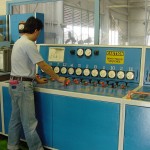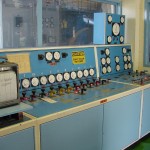Fairbanks Morse engines were used at Midway, especially during World War II and the Cold War era. Given the strategic importance of Midway Island during these periods, reliable power generation was crucial.
World War II Era: During the war, the U.S. Navy and other military branches significantly developed infrastructure on Midway to support military operations. Fairbanks Morse diesel engines were a part of this development, serving as dependable power sources for the base and its operations.
Cold War Era: Midway continued to be of strategic importance after WWII. Fairbanks Morse diesel-electric generators were used to provide consistent and reliable power for the island’s facilities, including communications and radar stations.
Fairbanks Morse engines were used on Midway. The company is renowned for its opposed-piston engine design, which is recognized for its reliability and efficiency.
Legacy: The reliability of Fairbanks Morse engines is a testament to their engineering. Even today, many Fairbanks Morse engines, some dating back to WWII, continue to operate around the world.
These are images of the Midway Power Plant. Most of these photos were from a time when these gigantic diesels engines were providing power to the island to the entire island. These engines used JP5 fuel, which was the same fuel used to refuel aircraft at Midway.
After Midway Phoenix Corp made their exit from the island, on May 1, 2002, the US Fish and Wildlife Service installed smaller Diesel Electric Generators and added Solar Panels to each 2-story house.

























Curiously, those latter-day diesel-powered generators were in place long before Midway-Phoenix was forced off the atoll by F&WS’ economically restrictive policies. You need to avoid such gross factual errors in order to keep the narrative accurate. I returned in May-June 2000 to see the benign neglect destroying the original power plant structure, the looting of all the brass from the instrument panels, and obliviating the air-cooled generators with tons of sand covering the floor-level windings. So much for retaining the historical structures as a memorial!